On the Vitra Campus, Balkrishna Doshi’s Final Work Finds Stillness
The late Pritzker Prize laureate’s only building outside India invites quiet reflection through light and resonance, mirroring the verdant renewal of the Swiss furniture maker’s headquarters
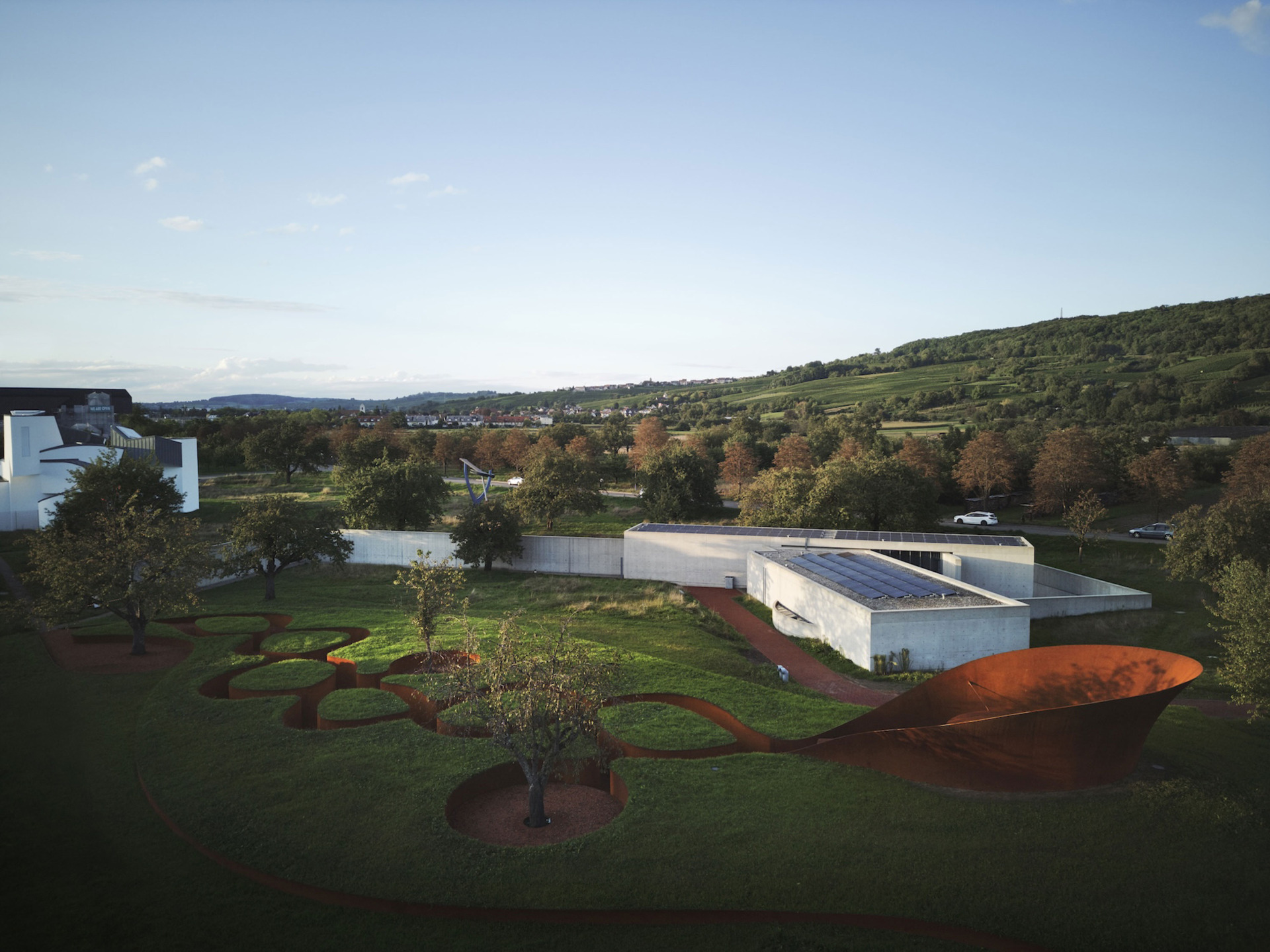
The Vitra Campus in Weil am Rhein, Germany, may be an industrial site, but it has become a proving ground for architectural milestones. Zaha Hadid realized her first building there with the Vitra Fire Station, Marina Tabassum debuted her first project outside Bangladesh, and the Vitra Design Museum marked Frank Gehry’s first building beyond the United States. Over the years, the Swiss furniture maker has transformed its once-industrial grounds into a flourishing park of architecture, gardens, and open landscape. Now the expanding headquarters has gained another landmark: a contemplative retreat by the late Indian architect Balkrishna Doshi. It is the first building he created outside India, his first to be completed posthumously, and the last he designed before his death in 2023.
Conceived in close collaboration with his granddaughter Khushnu Panthaki Hoof and her husband Sönke Hoof, the Doshi Retreat channels the Pritzker Prize winner’s lifelong pursuit of architecture as spiritual inquiry. Set within a meadow near Tadao Ando’s conference pavilion, the structure appears to emerge from the earth itself—a gesture that reflects Vitra’s broader effort to restore nature to the campus. The path unfolds in a slow descent, its steel walls carrying the faint resonance of gong and ceramic flute as visitors move from light to shadow.
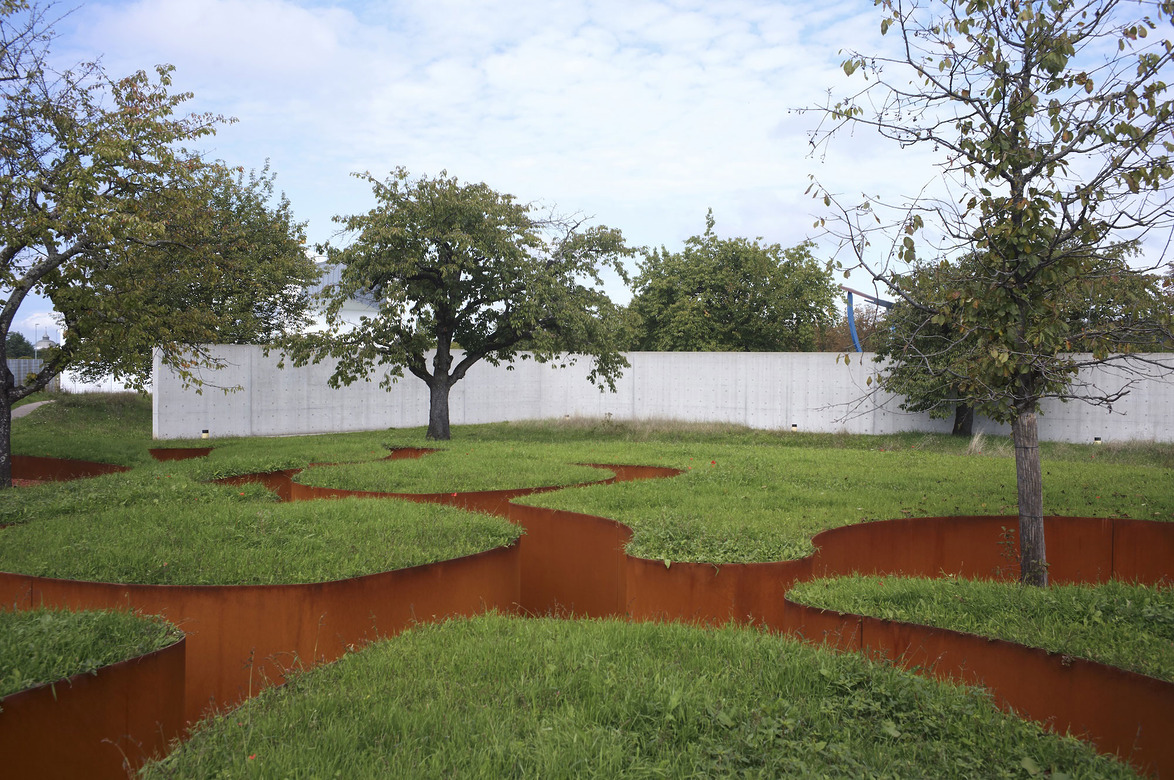
The idea took shape after Vitra chairman emeritus Rolf Fehlbaum visited the Modhera Sun Temple in Gujarat. Struck by a small shrine he saw there, he showed a photograph with Doshi and asked if he might envision a place for contemplation on the campus. Doshi accepted, and from that request grew an intimate exchange of sketches, texts, and dialogue that evolved into a sculptural form attuned to the renewed landscape. “This architecture was born from a dream Doshi had of two interweaving cobras,” Panthaki Hoof says. “From this subconscious vision emerged a written narrative, followed by a sketched concept composed of notes and evocations. It then evolved into an invitation to embark on a journey of discovery.”
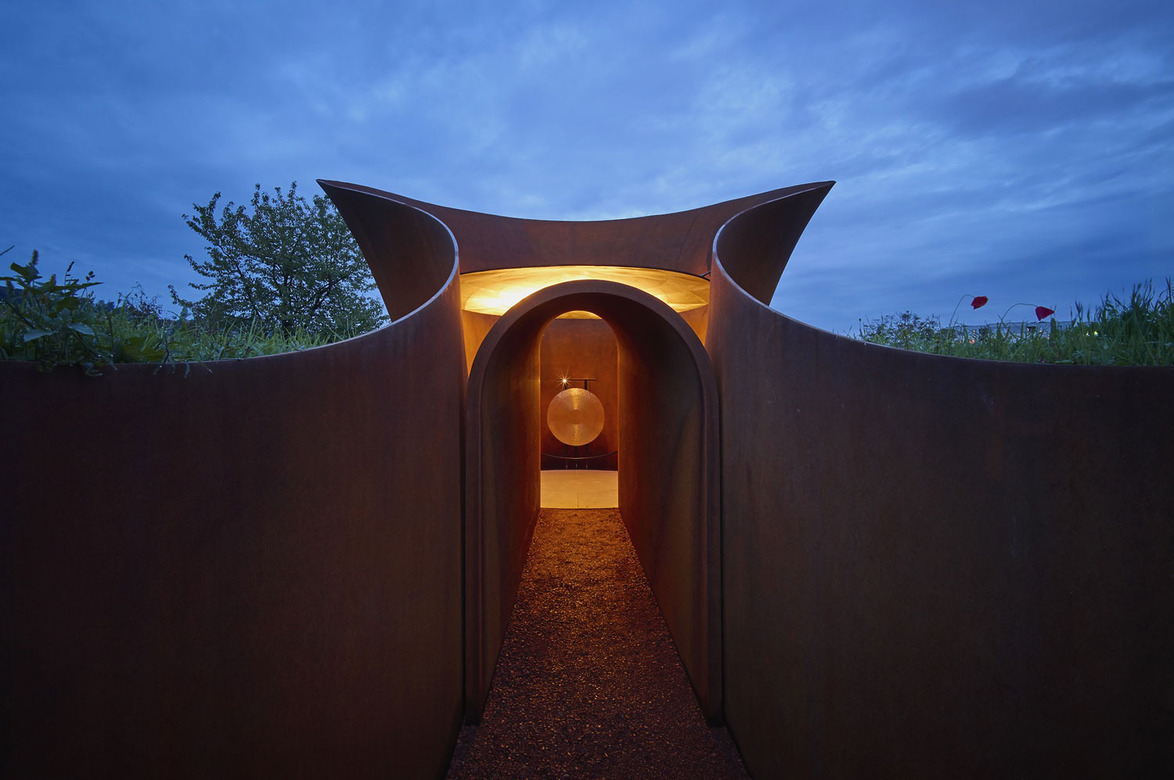
Sound defines the experience. A discreet audio system embedded within concave recesses emanates tones that deepen as one approaches the circular chamber. The path culminates in a short arched tunnel leading into a meditative inner sanctum where a ring of rainwater encircles the base, two semicircular stone benches invite repose, and a single gong stands beneath a ceiling open to light and air. A hand-hammered brass mandala, crafted in India, scatters refracted light across russet steel walls. Forged from XCarb steel donated by ArcelorMittal, the structure contains a high proportion of recycled metal and will acquire a burnished patina over time, blending with the surrounding meadows.
That evolving surface mirrors the campus itself, a public park that now attracts 400,000 visitors annually. “While the expansion of the campus initially took a toll on the natural environment, the area has been reimagined as a biosphere in recent years, with the planting of gardens and woods, the creation of ponds, and a reduction in paved surfaces,” Fehlbaum says. A new masterplan by Belgian landscape architect Bas Smets will continue this transformation.
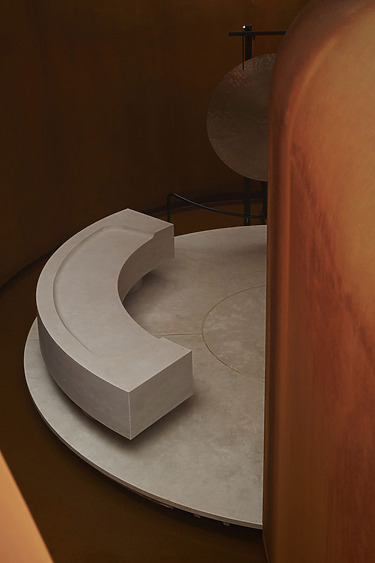
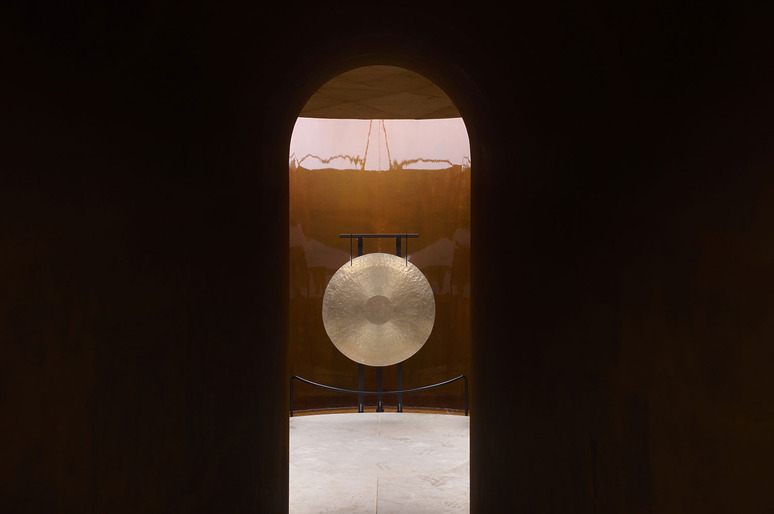
Doshi and his collaborators drew on the spiritual philosophy of Kundalini, the Sanskrit term for coiled energy believed to rise through the body’s chakras toward awakening. Sacred sound acts as the catalyst for this ascent, echoing the retreat’s fluid geometry. “It is sound, resonating through the visitor’s body, that erases the boundary between self and structure,” said Panthaki Hoof, who, along with her husband, has since worked on projects extending Doshi’s legacy. “The building reflects the sound back toward you, transforming both the journey and the chamber into resonant instruments.”
In his final years, Doshi devoted increasing energy to painting and sculpture, extending his architectural language into art. Rooted in Indian sensibility and shaped by modernist influence—no doubt a legacy of his apprenticeship under Le Corbusier in the early 1950s—his dream-driven paintings and sculptures trace fluid lines and layered textures that mirror his lifelong exploration of space and belonging. With the Doshi Retreat, he returned to the discipline that defined him. He never gave the project a label, envisioning it instead as a place for solitude and reflection, open to unseen presences and the search for deeper meaning.



